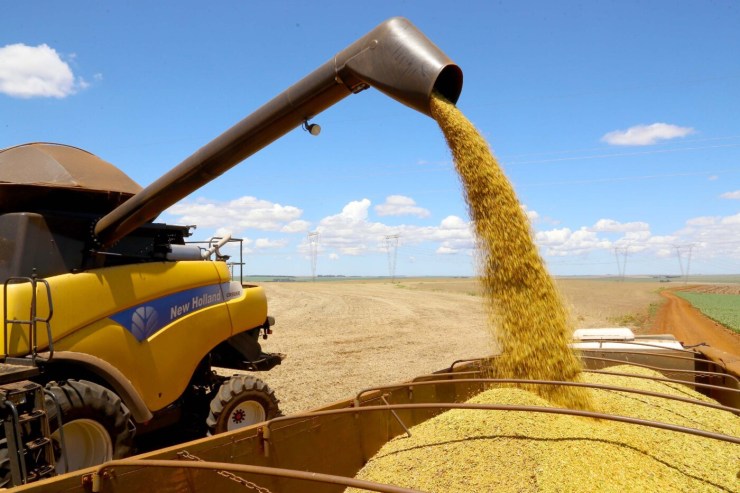The latest supply and demand report from the United States Department of Agriculture (USDA), released in June, brought specific revisions for the main grains, but reinforced signs of tightness in North American stocks of soybeans and corn. The publication was analyzed by Itaú BBA's Agro Consulting, which highlighted the growth in global demand, mainly from China, and the maintenance of production stability in Brazil.

Photos: Disclosure/OPR Archive
For soybeans, the USDA slightly raised its estimate for global final stocks for the 2025/26 harvest, from 124 to 125 million tons. The revision was mainly due to the expectation of an increase in Chinese imports, which should reach 112 million tons — four million more than in the previous season. In the case of the United States, although average productivity remained at 3.5 tons per hectare (58.8 bags/ha), final stocks were reduced from 9.5 to 8 million tons, which represents a decrease of 15.7% and suggests a tighter domestic balance.
In Brazil, soybean production was maintained at 175 million tons for the next harvest, with exports expected to grow, reaching 112 million tons — an increase of 7.2% compared to the previous cycle. Argentina, on the other hand, saw a slight increase in export volumes and closed with adjusted final stocks of 25.4 million tons.
In the corn market, the USDA also revised global ending stocks for the 2025/26 crop downwards, now estimated at 275 million tonnes, compared to 278 million in May. Although US production was maintained at 401.8 million tonnes, ending stocks were adjusted to 44.5 million, indicating a reduction compared to the previous forecast. China is expected to import 10 million tonnes, two million more than in the 2024/25 cycle.
In the Brazilian case, production remains at 131 million tons, with final stocks estimated at just 2.6 million, which reflects strong domestic consumption combined with the good pace

of exports. Ukraine also saw improved projections, with production estimated at 30.5 million tons and stocks almost doubling compared to the last harvest.
For wheat, the report revised global ending stocks for the 2025/26 harvest to 263 million tons, three million fewer than the previous forecast. The main change came from China, which increased its import estimate to 6 million tons, double the amount recorded in the previous season, due to adverse weather conditions such as drought. In the United States, exports were adjusted upwards, while production saw a small reduction. Brazilian wheat production was maintained at 8 million tons, with imports rising, estimated at 6.7 million.
In cotton, global production was revised slightly downwards, from 25.6 to 25.5 million tonnes. Brazilian exports were adjusted upwards, now projected at 3.1 million tonnes, while final stocks fell. In the United States, production was reduced to 3 million tonnes, with stocks falling. China, on the other hand, had its import estimate adjusted downwards, with consumption maintained.
The June report reinforces Brazil's leading role in global grain and cotton exports, while highlighting China's growing dependence on soybeans, corn and wheat. The tighter inventory environment in the United States is also noteworthy, which could support firm prices on international markets. The situation maintains the focus on supply and demand fundamentals, but also requires attention to the geopolitical and climate risks that remain on the radar for the second half of the year.





